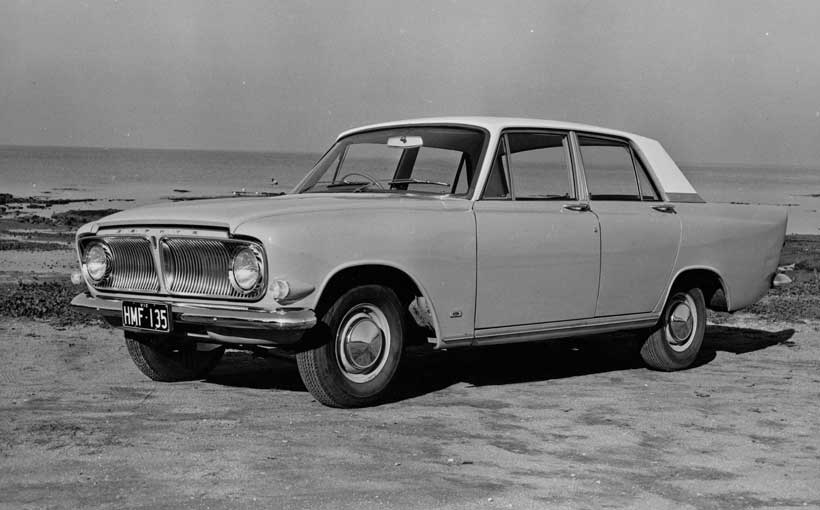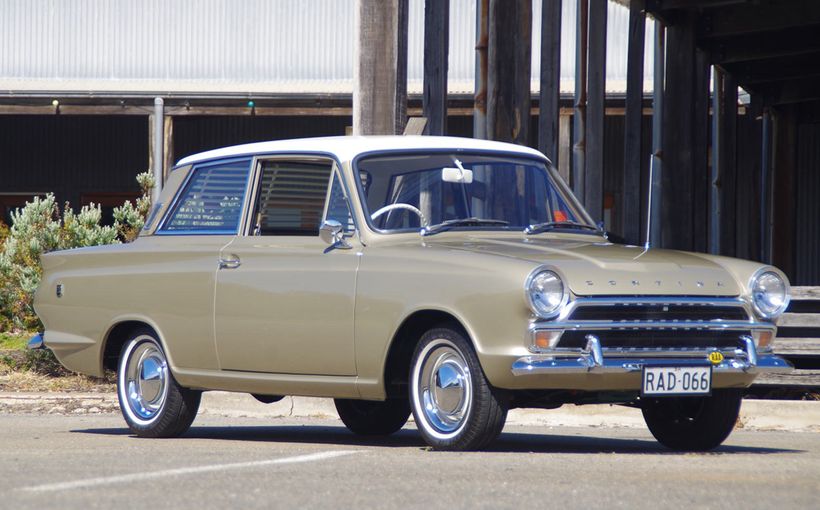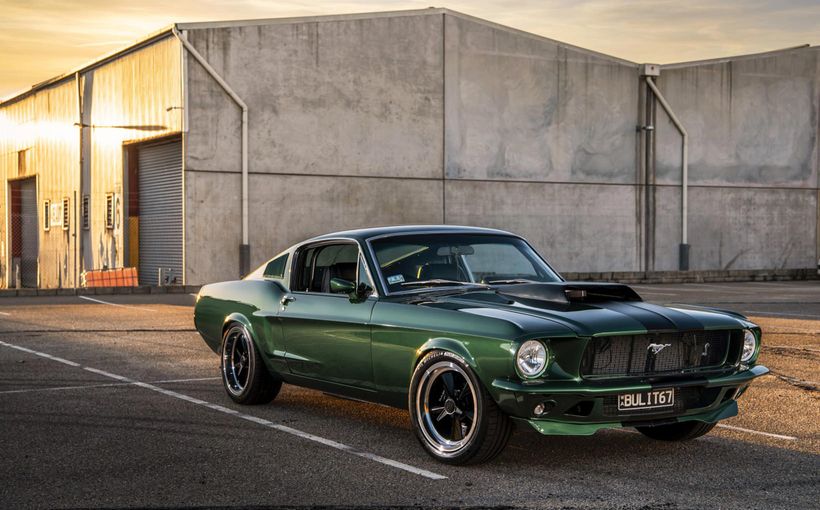FORD ZEPHYR MARK III: The Ford that could have beaten Holden

The Ford Zephyr Mark III is not nearly as iconic in Australian automotive history as it might have been. Even perhaps ought to have been. Although the 1962 Zephyr was assembled in Ford Australia’s Broadmeadows factory, it might have been manufactured there with a much higher degree of local content and a significantly lower selling price, but for a decision taken in 1957.
That was when a team of Ford Oz executives led by then managing director Charles Smith travelled to Dearborn to check out the Zephyr Mark II A, the car intended to be manufactured in the new plant with the aim of challenging the supremacy of the Holden. But Smith and his team were also shown the forthcoming Falcon and chose that instead of the English car. The Falcon looked sleeker and more modern and, importantly, was lighter and would be less expensive to manufacture.
Imagine how some of those Ford blokes would have felt when they saw the styling and specification of the newly launched Mark III in early 1962! By then, the Falcon had earned a terrible reputation. Here was a new English Ford with more power, front disc brakes and a four-speed all-synchromesh gearbox, at a time when the Holden EK struggled to match the performance figures of its 1948 forebear.

Ironies abound. The Mark III Zephyr was a hugely superior car to the 1951 original, while the Holden had not really progressed all that far. Sure, it had undergone one complete restyle with the FE and a major facelift (FB, 1960) with three minor facelifts (FJ, FC, EK) but it retained a similar power to weight ratio, drum brakes all round (never better than marginal), a three-speed gearbox with non-synchro first and a hose-out style interior.
I guess when you have 50 per cent of the market, there’s always a risk that complacency may set in. The main reason the Australian team opted for the Falcon rather than the proposed Mark IIA Zephyr (which was essentially a Mark II with more Zodiac-like decorations, a bit like the FC Holden was to the FE), was that a reheated 1956 model would have looked pretty dated in 1960. But the Mark III was a Thoroughly Modern Millie with its distinctive fins, large glasshouse and generally elegant lines. So for Ford Australia the timing was out by maybe 18 months.
But before I discuss the Mark III in detail, it’s necessary to unpack the relationship between the first Holden and the first Zephyr/Consul. And that’s because the Ford, too, can trace its roots back to General Motors right near the end of World War II and just afterwards.
An engineer called Earl MacPherson was in charge of the Chevrolet Cadet small car program. After that program was officially cancelled on 15 May 1947, MacPherson left GM and went to Ford, taking his ideas with him. Alfred P. Sloan, Jr. and his Board realised that in the postwar boom they could sell every so-called ‘full-size’ car they could build and there was more profit to be made there than in a smaller model. This thinking continued until the success of the Volkswagen Beetle promoted a rethink. And so the first ‘compact’ Chevrolet was the Corvair in 1959.
Earl MacPherson had made grand plans for his Cadet, which was always going to be a more sophisticated vehicle than the planned Australian car, even though the two were to be of similar size. He had a special kind of independent front suspension in mind and planned to use 12-inch wheels to emphasis the car’s low-slung three-box design. The Cadet was to have had a 2.0-litre overhead valve six-cylinder engine with a comparatively high output. Significantly, the decision had already been taken to use an engine of similar configuration in the forthcoming Australian car. This idea of building a smaller Chevrolet – having been shelved in 1938 – appears to have gained momentum from the findings of the engineering team charged with developing what was to become the 48-215 Holden.

It’s difficult to imagine MacPherson being anything less than strongly disappointed by the decision to can the Cadet and when he accepted the overture from Ford’s Harold Youngren, his ideas for this smaller Chevrolet went with him. MacPherson got his car after all. It was re-imagined as the Ford Consul/Zephyr Six.
The unique front suspension took his name and the Consul/Zephyr were the world’s first cars with MacPherson struts. The wheelbase was just four inches shorter than the Cadet’s, the wheels one inch larger in diameter and the three-box styling followed the themes sketched by Frank Hershey, who also gets the credit for the Holden, which was always going to be a simpler design than the Cadet.
No question, the 1951 Ford Consul and Zephyr were among the most modern cars of their time. They certainly made the Holden look like the pre-war design it (mostly) was. The Holden’s ancestry was, of course, the 1938 Experimental Light Car 195-Y-15. (Interestingly, 195-Y-15 was one of a pair, the other car being 195-Y-13.
Identical but for its four-cylinder engine. The question posed was: which works better for a car of this size, a four or a six? Even though the decision was made in the six’s favour, Vauxhall produced its postwar sedans in four-cylinder Wyvern guise and the sixpack Velox. How interesting it is that Ford of England also hedged its bets with the four-cylinder Consul and Zephyr Six!)
That first Zephyr had plenty in common with the Holden and between them these two new cars set a new formula for family sedans: lusty sixpack engines, room for a sixpack of occupants, good economy and a big boot. But through the 1950s, frankly, Holdens did not advance all that much, while the Zephyr in 1956 Mark II got a decent boost in performance to match its fresh looks.
The Mark III was nothing less than a leap forwards. It made not only its predecessor but also the Holden and the XK Falcon seem like yesterday’s cars. Where both of them were somewhat basic in mechanical specifications, this radical new Zephyr was almost a sophisticate. But the marketing men (they were all men in those days!) were almost embarrassed by this excellence. They could ill afford to have the Zephyr show up as superior to the Falcon. Wheels magazine concluded a review of ‘The Popular Sixes (£1000 to £1450)’ thus: ‘The ironical thing about the Zephyr is that although it is a remarkably good car, Ford is highly committed to the manufacture of Falcons and just cannot get too involved with the ckd Ford from England.’
Any direct comparison between a Holden 48-215 and a ‘Mark I’ Zephyr could go either way. The Ford had eight more brake horsepower at 68, but this was offset by extra weight, the Holden being remarkably light for its size, thanks to breakthrough technology in this area from General Motors via Russell S. Begg, the Holden’s chief engineer who came to the position after introducing monocoque construction at GM’s German subsidiary Opel in the Nazi era. The Zephyr was the better handler but the Holden coped more easily with difficult terrain, thanks to its bigger wheels and greater ground clearance.
The original Zephyr Six had a 2.3-litre engine but this unit was enlarged to 2.6 litres for its Mark II successor and power went up to an impressive 86 brake horsepower, compared with the FE’s 70. Like the first Holden, the Zephyr Six ran out of puff at 80 miles per hour, which was impressive in the early 1950s but the Mark II could achieve 88. So the comparison between Ford and Holden was no longer close. Frankly, the Zephyr was worth every one of the extra 30 or so pounds.

The Holden’s maximum power was up to 75 for the 1962 EJ which reached showroom some months after the exciting new Zephyr Mark III. Any comparison between the performance of these two cars showed up the old-fashioned nature of the Holden’s engine and gearbox.
In every respect the Mark III’s strongest competitor in the Australian market was the Chrysler Valiant R-Series which had arrived in January of that huge year, 1962. Local buyers now had a choice between two keenly priced family sedans that could achieve 100 miles per hour under slightly favourable conditions. Interestingly, contemporary Wheels magazine road tests credit the Zephyr with 98.7 and the Valiant with 98.9! And an EJ Holden Premier managed just 79.0.
With 106 brake horsepower the Mark III couldn’t match the 145 bhp Valiant’s jackrabbit acceleration but in everyday driving its all-synchromesh four-speed gearbox and front disc brakes more than compensated for a couple of seconds lost between zero and 70 miles per hour. The Valiant got to that speed in 18.9 seconds, compared with 20.8 for the Zephyr and a dismal 34.6 for the auto-only Premier.
Nineteen sixty-two was a huge year for the local industry. BMC Australia introduced the Austin Freeway and Wolseley 24/80 with the 2.4-litre ‘Blue Streak’ sixpack, developed locally by adding two cylinders to the B-Series four which powered the Austin A60 and Morris Oxford. Finally, BMC Oz had a serious challenger for the Holden but it had to compete also with the Zephyr Mark III, the Valiant and the XK Falcon. In this same year Ford Australia offered the 170-cubic inch ‘Pursuit’ engine as an option on the XK.

The Zephyr Mark III was the driver’s pick of all these cars. It was the only one with a four-speed gearbox and the only one with disc brakes. In the UK buyers could specify front bucket seats and a floorchange but these highly desirable improvements did not reach Ford Australia’s agenda.
Given its mechanical sophistication, the Zephyr was let down a bit by unconvincing fake wood on the dash and poorly placed minor controls. In the disappointing Australian fashion of the time, there was no heater/demister or windscreen washers. English buyers could choose the more expensive Zodiac but this model was never offered in Australia where it might have sold quite well. I say this because in terms of its performance and dynamics the Zephyr was more evenly matched to up-spec cars like the Fiat 2300 and even the Mercedes-Benz 220SE than to the Holden or Falcon.
Interestingly, too, 1962 was the year of the Holden Premier and the Falcon Futura. In one sense this pair wedged the Zephyr Mark III. Premiers were popular in Toorak and Vaucluse as second cars. Their plush leather trim and Mercedes-like white steering wheel gave them a status that perhaps eluded the Zephyr. Now, a Ford Zodiac with leather and fashionable quad headlights could have written a different story.

Had history unfolded differently – Charlie Smith not peeking at the Falcon – the Mark III Zephyr could easily have been the car with which Ford Australia knocked the Holden off the top of the sales chart. If Charlie Smith and his colleagues had never been offered a choice between the Falcon and the Mark II A Zephyr in 1957, the Mark III would have been locally manufactured (as opposed to assembled from ckd kits), priced even more sharply and marketed like there was no tomorrow. How could the EJ Holden have competed with an Aussie Zephyr Mark III? Or a Premier with an Aussie Zodiac?
Hindsight suggests that 1962 represented the true beginning of the swinging sixties as far as the international automotive industry was concerned. That year brought Ford’s first international cars – the Cortina, the Mark III Zephyr, and to a lesser extent the Compact Fairlane. The MGA was replaced by the thoroughly modern monocoque MGB. And in 1963 the Zephyr Mark III would be attacked from above, as it were, by the Triumph and Rover 2000s.

The Mark III Zephyr never achieved the success it deserved. In Australia it was in a kind of No Man’s Land, trimmed like a Holden Special but with the mechanical specification to challenge that Italian sophisticate the Fiat 2300 or the poised Mercedes-Benz 220SE. And the world was moving so quickly in the 1960s that by August 1958 the Zephyr which had seemed so radically new just three years earlier quietly slipped off the Australian market it had really deserved to conquer.









